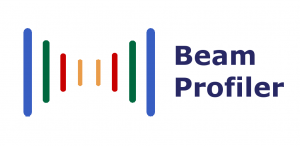How to avoid saturation of the laser spot
There are various ways to deal with saturation problems that occur when the laser spot on the detection card is too bright for the camera sensor. The app will automatically reduce exposure time and sensitivity as much as possible, but after the minimal values are reached it may be necessary to take additional steps.
Beam attenuation
If you attenuate the laser beam before hitting the target, it is important to use high quality laser-grade filters since otherwise the beam shape might be altered. This may occur due to thermal lensing effects, interference fringes from multiple unwanted reflections, or simply because of dust or finger prints on the filter. For some types of lasers you may also consider reducing the output power directly at the laser driver, e.g. by reducing the driving current or the intensity of the pumping light. However by doing so the thermal conditions inside the laser may change, which could lead to a change in the beam profile which you are trying to measure.
Camera filters
A better alternative may be to attach an attenuating filter in front of the smartphone lens. This is less critical, since the light has already been scattered by the target and therefore passes the filter as incoherent and low-power light. Much cheaper photographic neutral density filters can be used here, instead of laser-grade filters. A problem with this approach is that the ambient light needed for target detection is attenuated as well, and therefore target detection might stop working if the filter is too dark. If this happens an extra lamp as background illumination for the target might help.
Target selection
Light attenuation can also be achieved with the target, by choosing a black target card instead of a white one. In practice a black target will attenuate the light power by about two orders of magnitude. Target detection should work equally well as with a white card, since the black background is only applied to the inner area of the card where the laser spot is measured.
A disadvantage is that any inhomogeneity of the black card (e.g. stripes from imperfect printing, or dust on the surface) will affect the measured beam profile. We have also observed stronger laser speckles for some lasers when using black cards instead of white ones.
Another option is to flip the target such that its backside is facing the beam, although this comes at the price of significant broadening of the laser spot. The effect depends on paper thickness, so if you use a thin paper and do not have to deal with tightly focused beams it might be an easy solution.
For powerful lasers which may burn a hole into paper targets, you can also print the target on a transparent film, e.g the ones which are still sold for overhead projectors.
